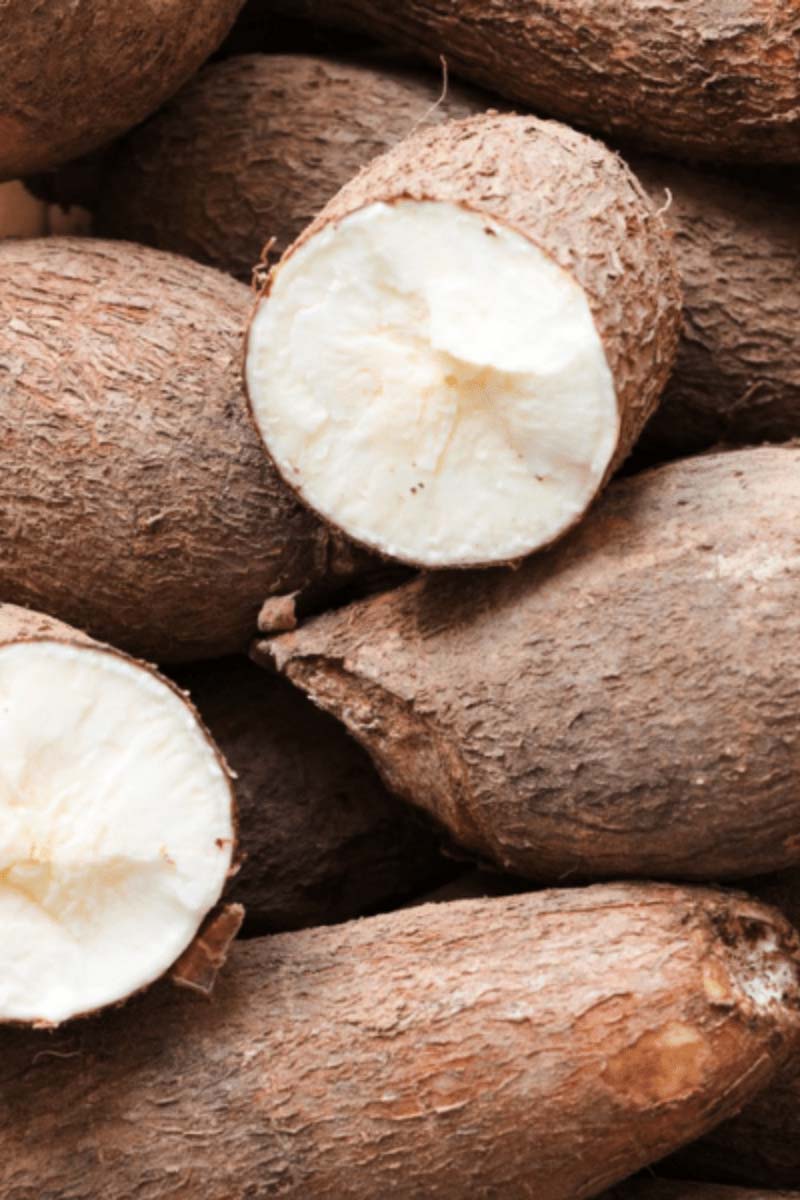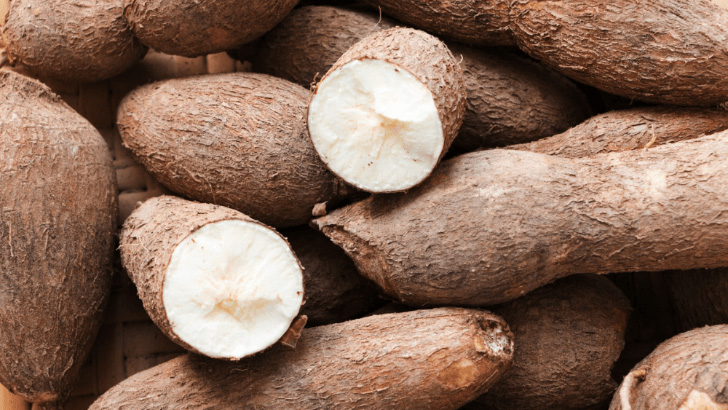You might be curious about the flavor of tapioca. It’s starch with a distinctive texture and appearance. It binds gluten-free bread, thickens liquids, and adds a fluffy, velvety feel to desserts. What is the flavor of tapioca? Here’s a simple instruction to help you out. It has a texture similar to uncooked egg noodles, which may be strange at first, but you’ll enjoy it after you get used to it.
While tapioca is a low-cost and nutrient-dense ingredient, it can harm your health. Tapioca can be harmful in some situations if handled wrong. The component “linamarin” can be transformed into hydrogen cyanide, which is lethal if eaten. If you consume the correct kind of tapioca, this is unlikely. Tapioca is typically used in home kitchens baking, and vegan or vegetarian cuisine.
What is tapioca?
Tapioca is a type of starch that can be found in various cuisines. Indeed, it’s such a common ingredient that you’ve probably never given it much (or any) consideration and taken it for granted.
Tapioca is best known as the base of a sweet pudding, but this gluten-free starch derived from the cassava root can also be used to thicken savory and sweet foods. Tapioca has a neutral flavor and a high gelling power, making it a versatile thickening ingredient for sweet and savory dishes. Tapioca, unlike cornstarch, can endure freezing and thawing without losing its gel structure or breaking down, making it an excellent thickening for ice cream.
Tapioca, in fact, functions similarly to flour, with the added benefit of being gluten-free. As more people attempt to eliminate or limit gluten in their diets, tapioca is increasingly widely utilized. In a nutshell, tapioca is a flour alternative.
What does tapioca taste like?
Tapioca doesn’t have much flavor, but it provides texture and heaviness to desserts like pudding when sweetened. Aside from a moderately starchy flavor, tapioca has essentially little flavor. But this is a benefit, not a drawback, because it allows tapioca to act as a blank canvas for other flavors, whether sweet, savory, spicy, or otherwise. We’ll go through that in greater detail when we get to some of the typical tapioca uses.
Tapioca is gluten-free and can be used in both sweet and savory dishes. It’s a naturally gluten-free food that’s also utilized in various dishes. Pizza, sweets, and even ice cream can all benefit from it. It may be a good gluten-free flour replacement for people with gluten sensitivities. To make a smoother and more flavorful dish, combine tapioca powder or mashed tapioca with other flours.
Tapioca’s nutritional properties
Tapioca is a starch that has a low nutritional value. That doesn’t imply it’s bad for you; rather, it’s a really bland dish. Tapioca flour (which differs from cassava flour in that it is prepared by drying and processing fluid extracted from the root rather than the powdered tuber itself) has essentially no protein, very little fat, and is similarly low in fiber, according to Healthline. It is almost entirely made up of carbohydrates and provides less than 1% of a person’s daily necessary vitamin and mineral intake.
Tapioca, in my opinion, has no nutritional value. However, gluten-free and grain-free are viable replacements for many foods that many people cannot safely or properly digest. As a result, it is a healthy alternative for many people. It allows those with various food allergies or autoimmune issues to eat foods like pizza and pudding again.
What is the process of making it?
Squeezing starchy liquid from crushed cassava root varies by location, but it always involves squeezing.
The water is allowed to evaporate once the starchy liquid is gone. A fine tapioca powder remains after all the water has evaporated.
Depending on the desired end product, the powder is processed into flakes or pearls.
The most popular type is pearls, which are common in bubble tea, puddings, desserts, and cooking as a thickening.
The flakes, sticks, and pearls must be soaked or boiled before eating because they are dehydrated. They may grow to double their original size, becoming leathery, bloated, and transparent.
Cassava flour (ground cassava root) is frequently confused with tapioca flour. On the other hand, Tapioca is a starchy liquid made from crushed cassava root.
What is it used for?
Tapioca is a gluten-free, grain-free foodstuff with a variety of applications:
- Bread that’s free of gluten and grains. Tapioca flour can be used in bread recipes but is typically mixed with other flour.
- In poor areas, it’s used to make flatbread. Depending on the toppings, they can be used for breakfast, dinner, or dessert.
- Desserts and puddings are two of the most popular foods in the world. Puddings, pastries, snacks, and bubble tea are all made using pearls.
- Soups, sauces, and gravies can all benefit from this thickening. It’s inexpensive, tastes neutral, and thickens well.
- An agent that binds. It’s used to improve the texture and moisture content of burgers, nuggets, and dough by retaining moisture in a gel-like structure and preventing it from becoming soggy.
The pearls have also been used to starch fabric by being boiled.
Is tapioca meant to be chewed or swallowed?
Boba is made from tapioca. Because tapioca is an ingredient, even when the “pearls” or “bubbles” are at their maximum size, they do not dissolve as quickly as otherwise. Therefore, it is risky to consume them without first thoroughly chewing them.

Tapioca pudding vs. Rice pudding: Which is healthier?
As an even lower-calorie option, tapioca pudding might be used for rice. 1/2 cup of regular commercial tapioca pudding (skim milk, sugar, tapioca, preservatives, and flavorings) has 131 calories, 2 grams of protein, and 4 grams of fat, with only 1 gram of saturated fat.
How May tapioca used in cooking?
Tapioca is versatile and can be used in various applications, including cooking and baking. The majority of tapioca recipes call for sugar-sweetened desserts.
Tapioca flour
Tapioca flour is a fantastic cooking ingredient. It thickens fast, has a neutral flavor, and lends a silky look to sauces and soups.
It’s even said to freeze and defrost better than cornstarch or flour. As a result, it may be better suited to baked foods consumed later.
This flour is frequently used with other recipes to boost nutritional value and texture.
Tapioca flour is used in a variety of recipes on this site.
Tapioca pearls
Before eating the pearls, they must be boiled. Typically, 1 part dry pearls to 8 parts water are used.
Over high heat, bring the mixture to a boil. To keep the pearls from adhering to the bottom of the pan, stir regularly.
Reduce the heat to medium and cook for 15 to 30 minutes, stirring regularly, once the pearls have begun to float.
Remove the pan from the heat, cover it, and let it aside for 15 to 30 minutes.
Recipes for tapioca pearl sweets can be found here.
Bubble tea
Bubble tea, a cold, sweet beverage, frequently uses cooked tapioca pearls.
The most common ingredients in bubble tea, also known as boba tea, are brewed tea, tapioca pearls, syrup, milk, and ice cubes.
Bubble tea is frequently brewed using black tapioca pearls, similar to white tapioca pearls but containing brown sugar.
Remember that bubble tea is typically high in added sugar and should only be consumed in moderation.
In tapioca pudding, what are the little balls?
“What are these made of?” you might wonder when looking at a tapioca pearl. The starch of the cassava root, grown in the tropics, is used to make the little white balls that give tapioca pudding its distinctive texture. After extracting the starch, it is shaped into small pearls.
Potentially negative health effects of tapioca
While nutritionally deficient, tapioca is generally considered safe to consume. While it may not be beneficial to your diet, it is unlikely to harm your health. However, according to Healthline, you should only cook with or eat tapioca items from a reputable brand, as badly processed tapioca can be hazardous. This is due to a poisonous chemical called “linamarin” in the cassava root. Although it is removed through the correct root processing, linamarin can be transformed into highly deadly hydrogen cyanide if consumed by humans. Again, with well-processed tapioca products, this is a rare hazard.
The only other significant health risks associated with tapioca are minor. Diabetics should avoid the dish because of its high carbohydrate content. Persons with a severe latex allergy should avoid it because of “cross-reactivity,” which occurs when the body misidentifies identical molecules in the cassava derivative, causing an allergic reaction.
Conclusion
Tapioca is frequently mistaken for sago, and the terms are frequently used interchangeably. However, they are not interchangeable. It is also less expensive than sago and has a similar texture to rice, but the former is a healthier option. Although the latter is more expensive, it contains more nutrients and is available in various countries. A vegan-friendly option is worth considering if you’re looking for a low-cost alternative to rice.
What is the flavor of tapioca? It’s a grain-free, neutral starch and has a texture comparable to gummy bears but without carbohydrates. Its starch contains no protein or fat, although it can be a satisfying substitute for grains. Tapioca can be found at most grocery stores in the United States and other countries.
